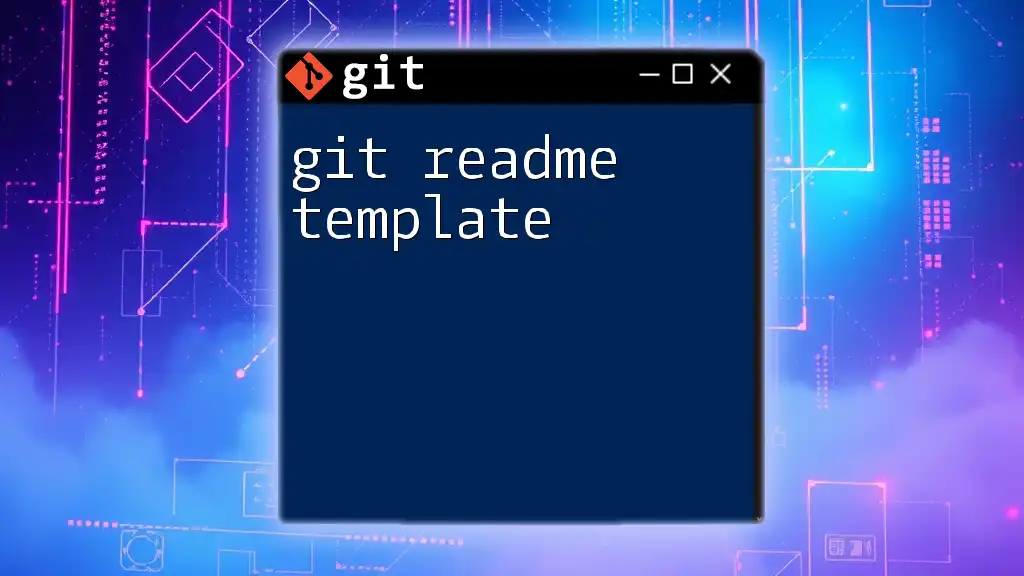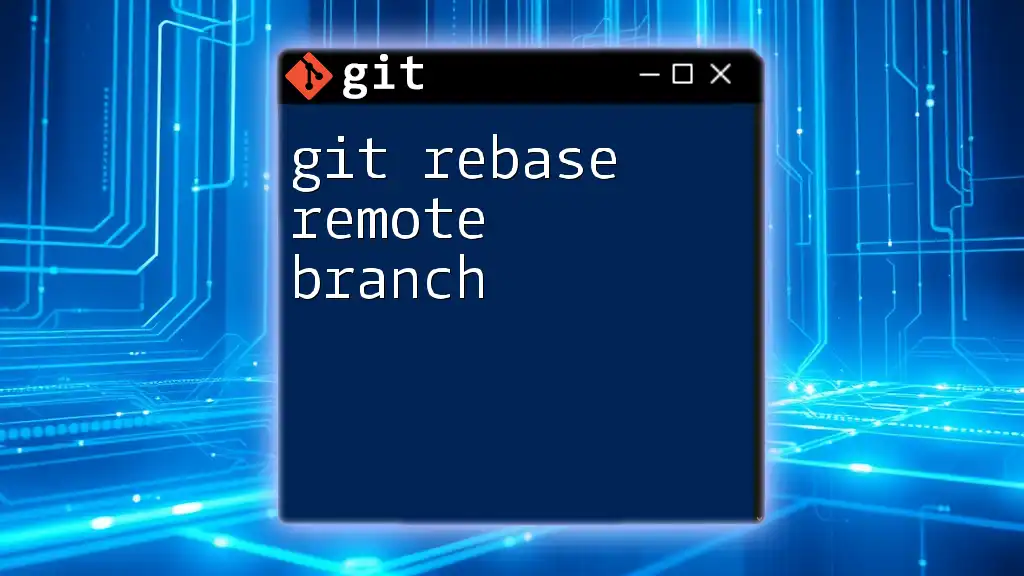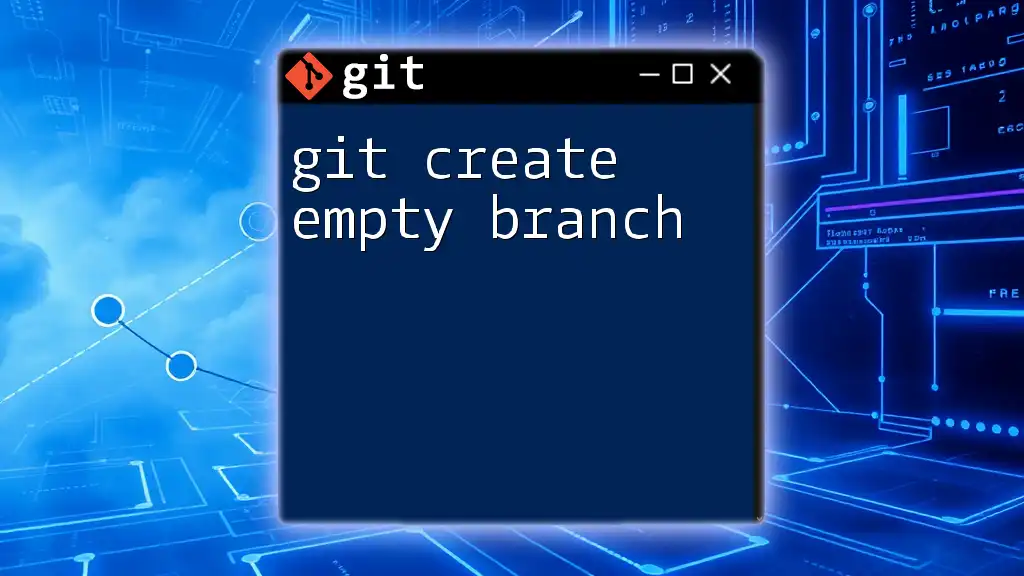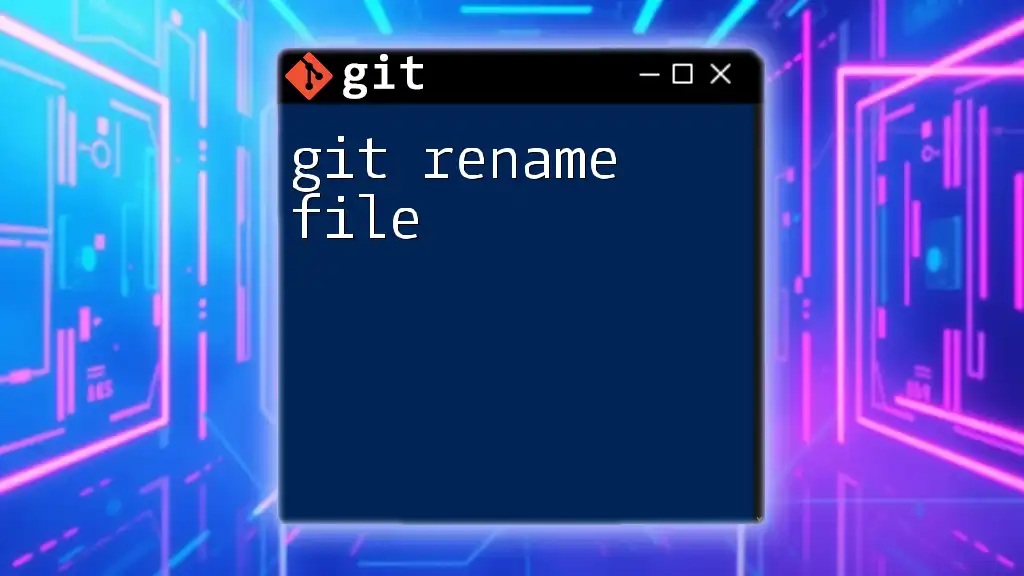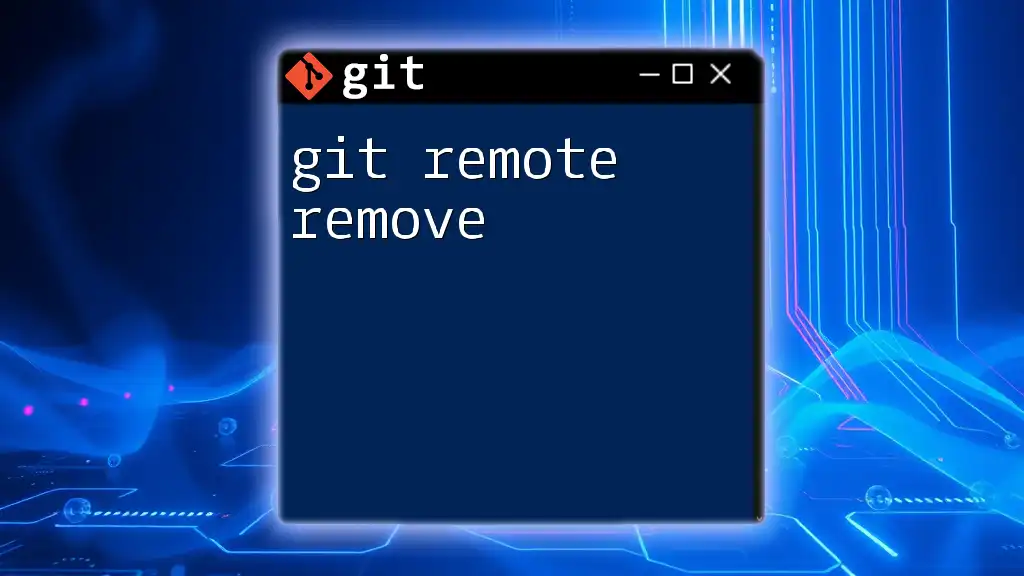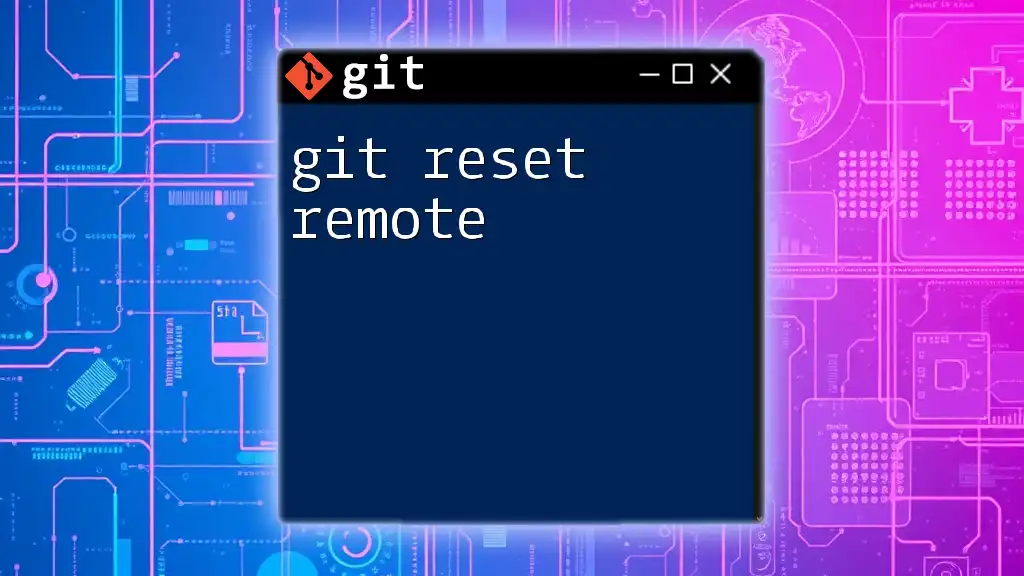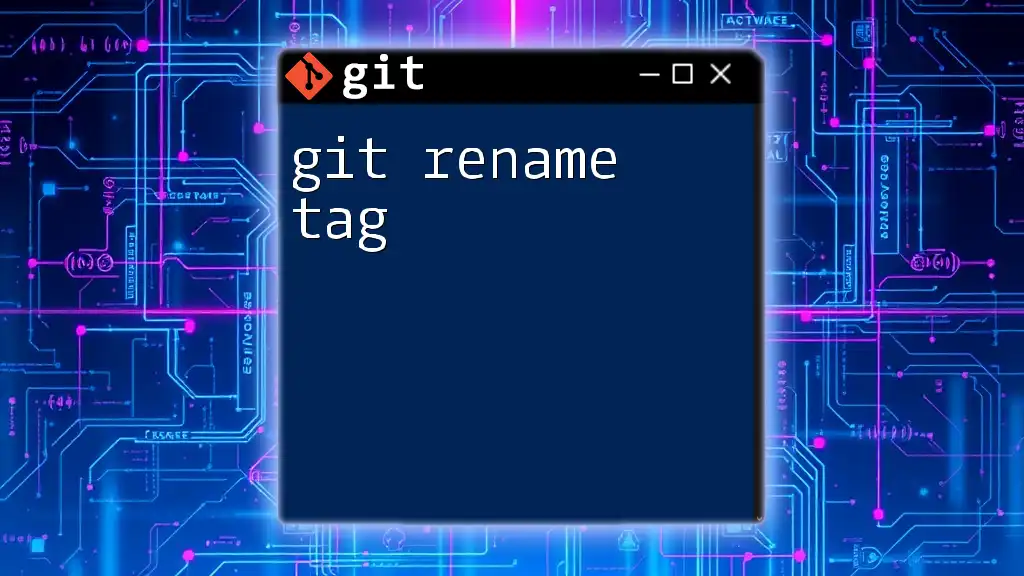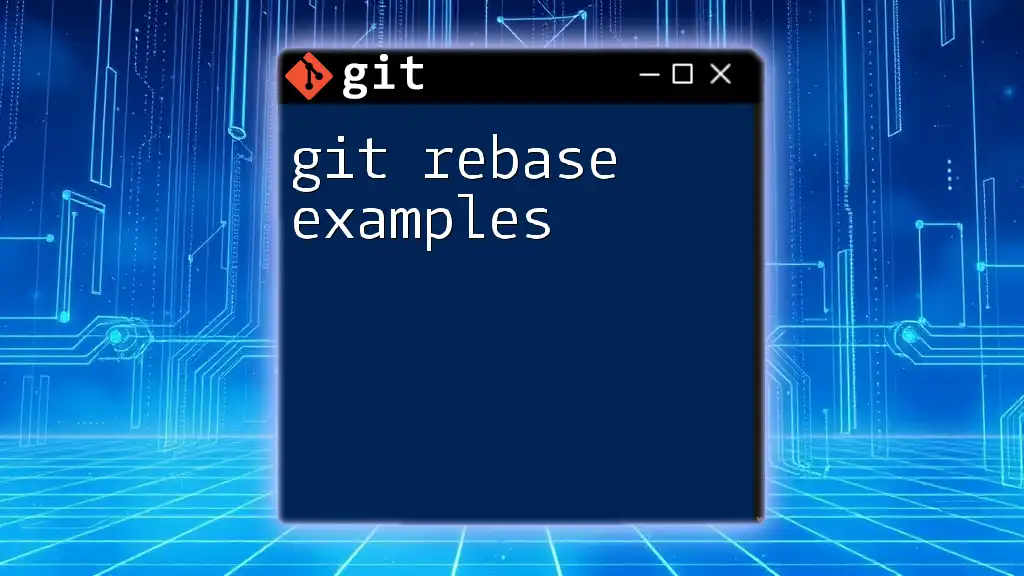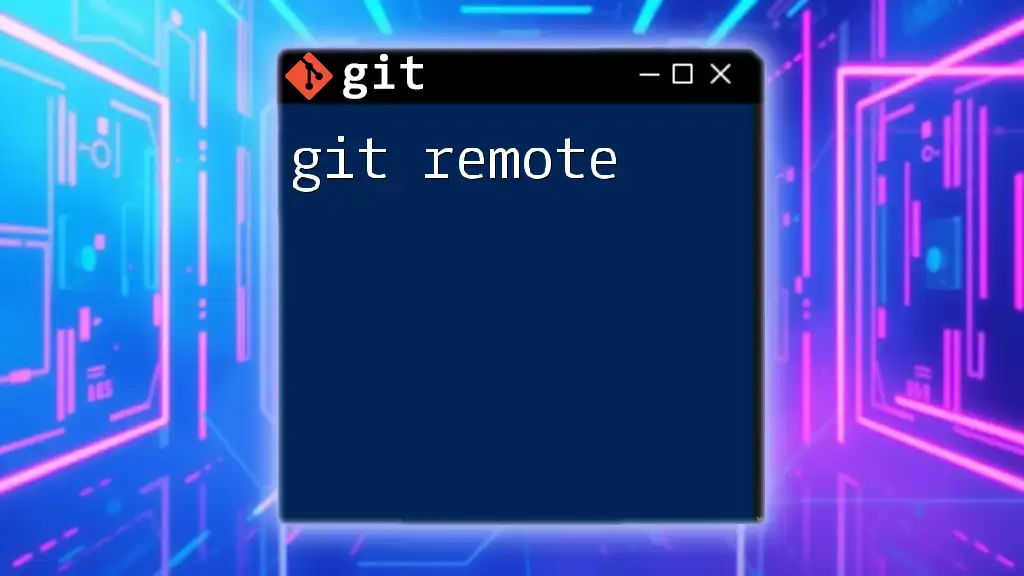A Git README template provides a structured guideline for documenting a project, ensuring essential information is easily accessible for users and collaborators.
# Project Title
## Description
A brief description of the project and its purpose.
<InternalLink slug="git-readme-newline" title="Git Readme Newline Explained: A Quick Guide" featuredImg="/images/posts/g/git-readme-newline.webp" />
## Installation
Instructions on how to install and set up the project.
```bash
git clone https://github.com/username/repo-name.git
cd repo-name
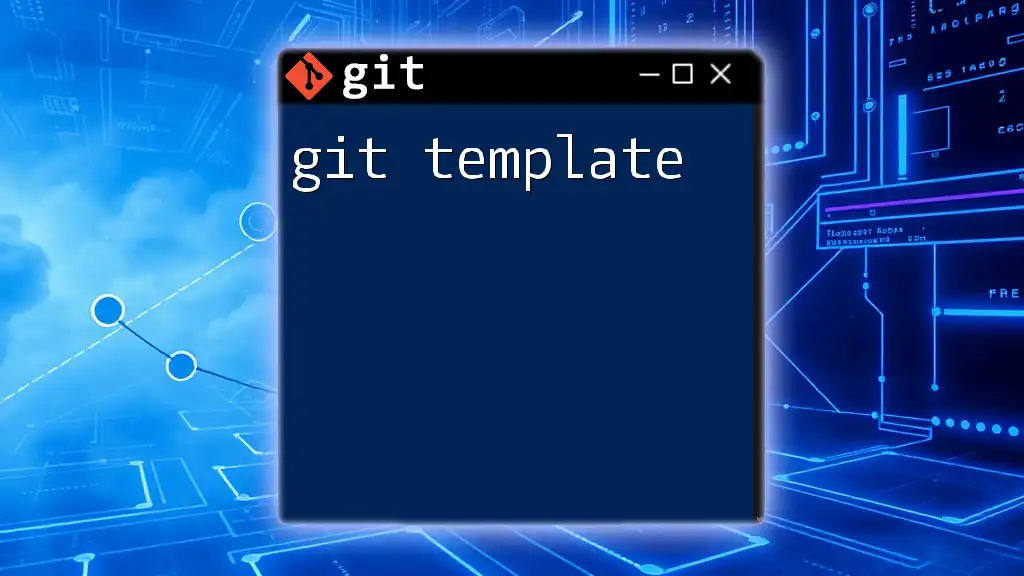
Usage
Example of how to use the project.
git start
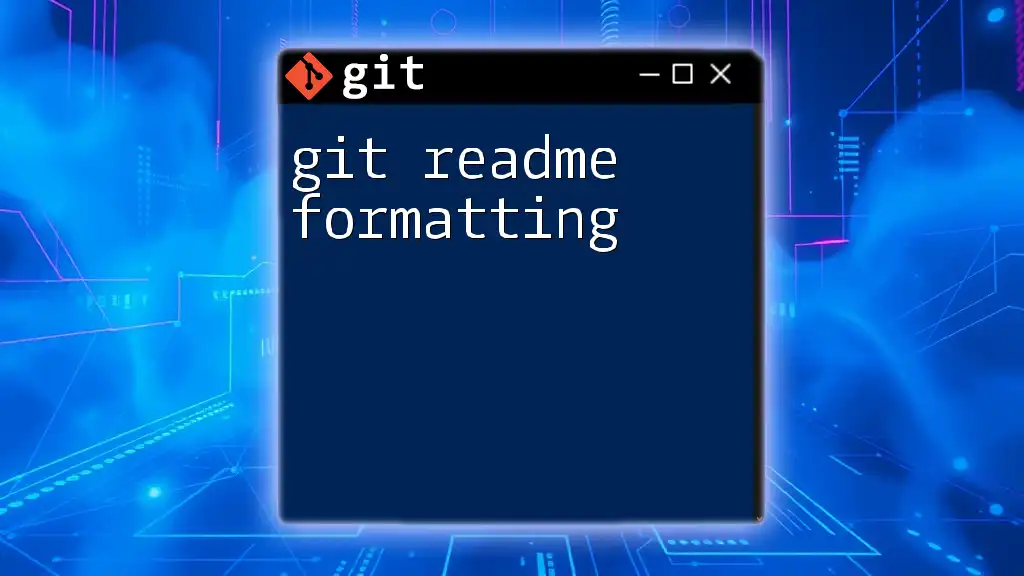
Contributing
Guidelines for contributing to the project.
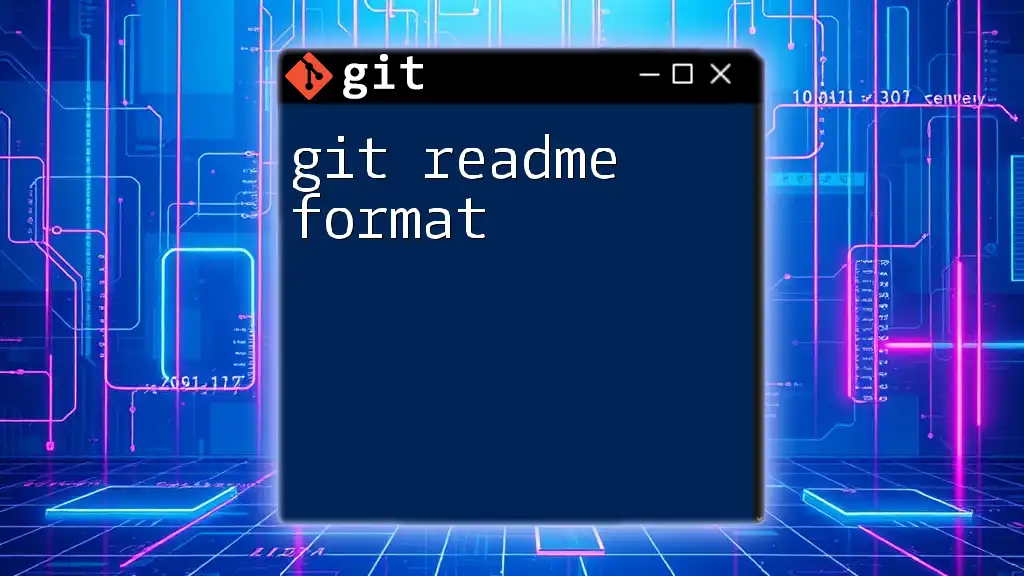
License
Information about the project license.
<InternalLink slug="git-pr-template" title="Crafting Your Perfect Git PR Template" featuredImg="/images/posts/g/git-pr-template.webp" />
## What is a README File?
A README file is a crucial text file typically included in the root directory of a Git repository. It serves as the primary source of information for a project, providing users and contributors with details about the project, how to use it, and how to contribute. Essentially, it’s the face of your project and often the first thing that potential users and contributors will encounter.
<InternalLink slug="git-commit-template" title="Git Commit Template: Crafting Your Perfect Message" featuredImg="/images/posts/g/git-commit-template.webp" />
## Importance of a README
### Enhances Discoverability
Having a well-structured README can significantly improve the discoverability of your project. Search engines often index README files, which means that a thoughtful approach to your content can drive organic traffic to your repository. By leveraging relevant keywords strategically, you can attract more users who might be interested in your project.
### Improves Collaboration
A good README fosters collaboration by facilitating clear communication among team members or contributors. When everyone understands the project’s goals, setup, and usage, it minimizes confusion and accelerates the onboarding process. This is especially valuable in an open-source environment where various contributors may join at different stages.
### Guides Users
A well-crafted README serves as an essential guide for users, outlining how to set up and utilize the project effectively. By providing all necessary details upfront, you reduce the chances of user frustration and ensure a smoother experience with your project.
<InternalLink slug="git-remote-update" title="Mastering Git Remote Update: A Quick Guide" featuredImg="/images/posts/g/git-remote-update.webp" />
## Essential Sections of a README Template
### Project Title
Start your README with a clear and prominent **Project Title**. This section should succinctly state the name of your project and, if necessary, its version.
```markdown
# My Awesome Project
Description
Following the title, provide a Description that offers a brief overview of what the project does and its purpose. This should be engaging and informative, capturing the essence of what makes your project unique.
A simple tool for managing your daily tasks efficiently. It allows users to create, edit, and delete tasks easily.
Installation Instructions
Next, include detailed Installation Instructions. This section is crucial as it guides users through the steps required to set up your project on their systems. Be clear and logical in your explanation, making it as straightforward as possible.
<InternalLink slug="git-rebase-explained" title="Git Rebase Explained: Mastering the Art of Code Integration" featuredImg="/images/posts/g/git-rebase-explained.webp" />
## Installation
1. Clone the repository:
```bash
git clone https://github.com/username/my-awesome-project.git
- Navigate to the project directory:
cd my-awesome-project - Install dependencies:
npm install
### Usage
Once installed, users will want to know how to use your project. The **Usage** section should provide practical examples and commands to demonstrate how to effectively engage with your tool or application.
```markdown
<InternalLink slug="git-template-repository" title="Mastering Git Template Repository: A Quick Guide" featuredImg="/images/posts/g/git-template-repository.webp" />
## Usage
Run the following command to start the application:
```bash
npm start
### Contributing
The **Contributing** section invites potential collaborators to participate in your project. It’s vital to offer clarity on how contributions can be made, often with a link to more detailed contributing guidelines.
```markdown
<InternalLink slug="git-rebase-explanation" title="Git Rebase Explanation: Mastering the Basics Seamlessly" featuredImg="/images/posts/g/git-rebase-explanation.webp" />
## Contributing
We welcome contributions! Please read our [Contributing Guidelines](CONTRIBUTING.md) for more information.
License
Transparency in your project's licensing is essential. In the License section, specify the type of license your project is using to clarify how others can use your work legally.
<InternalLink slug="git-rebase-update-refs" title="Mastering Git Rebase Update-Refs for Smooth Development" featuredImg="/images/posts/g/git-rebase-update-refs.webp" />
## License
This project is licensed under the MIT License - see the [LICENSE](LICENSE) file for details.
Acknowledgments
Finally, the Acknowledgments section is an excellent opportunity to express gratitude towards individuals or resources that have significantly contributed to your project’s development.
<InternalLink slug="git-readme-link" title="Mastering Git Readme Link: A Quick Guide" featuredImg="/images/posts/g/git-readme-link.webp" />
## Acknowledgments
- Inspiration from [Project X](https://link-to-project-x)
- Thanks to the community for their continuous support!
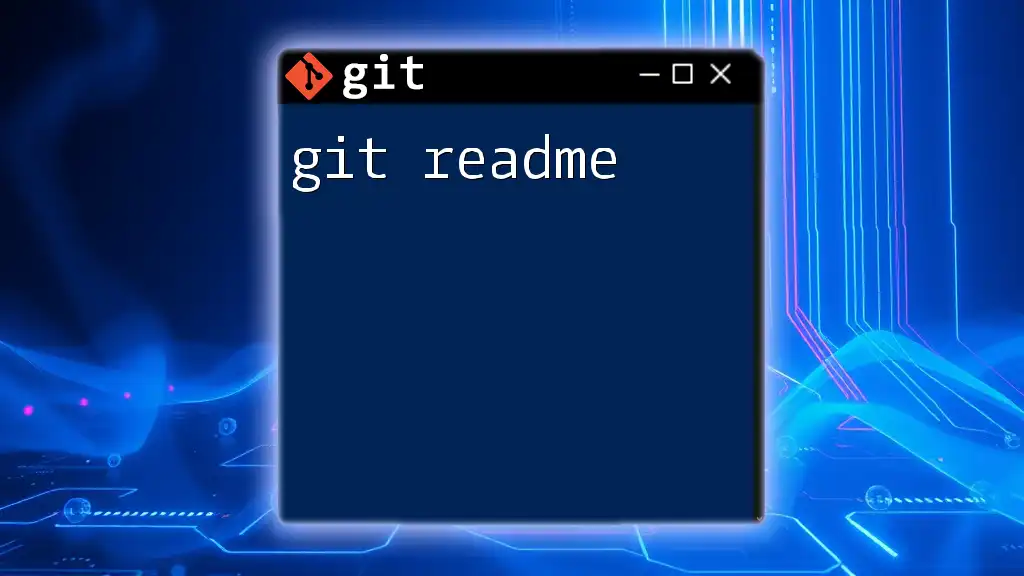
Customizing Your README
Tailoring Content to Your Audience
Your README should reflect the audience you are targeting. Adjust the level of detail and technicality based on whether your audience is mainly developers, end-users, or industry professionals. Understanding your readers’ needs ensures that they find the README valuable.
Adding Badges and Links
To enhance visual appeal and provide quick information, consider adding badges to your README. Badges can indicate build status, license type, or version number.

These visual elements draw the reader’s attention and offer instantaneous insights into your project’s reliability and stability.
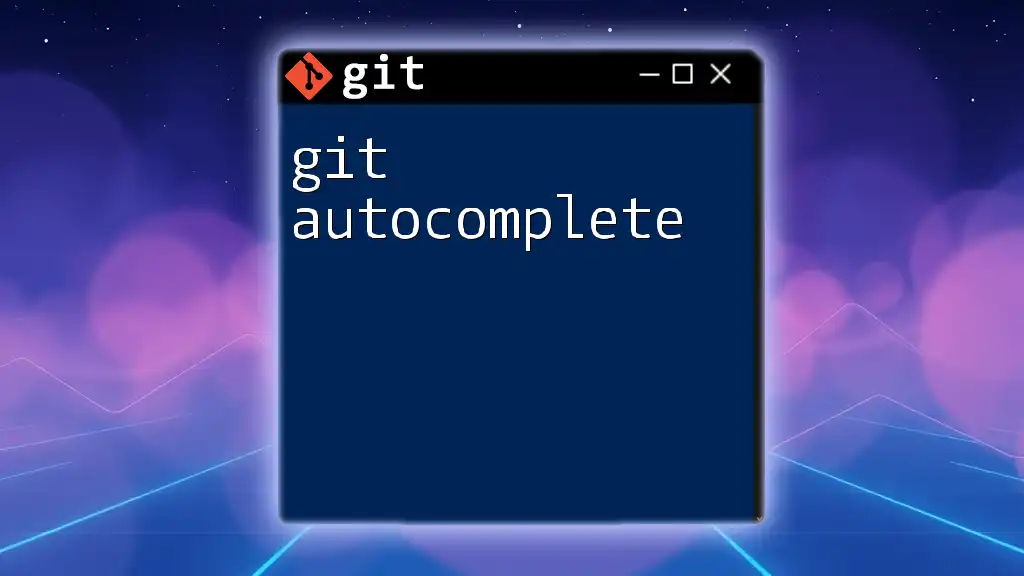
Best Practices for Writing a README
Clarity and Conciseness
Maintain a balance between clarity and conciseness. Use simple language and avoid jargon where possible. Each section should contain only the necessary information to guide readers effectively without overwhelming them.
Visual Elements
Incorporating visual elements such as screenshots or GIFs can provide context that text alone might struggle to communicate. Demonstrating what your project looks like or how it operates visually can engage your readers and encourage them to try it out themselves.
Maintaining the README
As your project evolves, so should your README. Regular maintenance is crucial to ensure that the information is current and accurate. Encourage users and contributors to check the README for updates as features evolve or new functionalities are added.
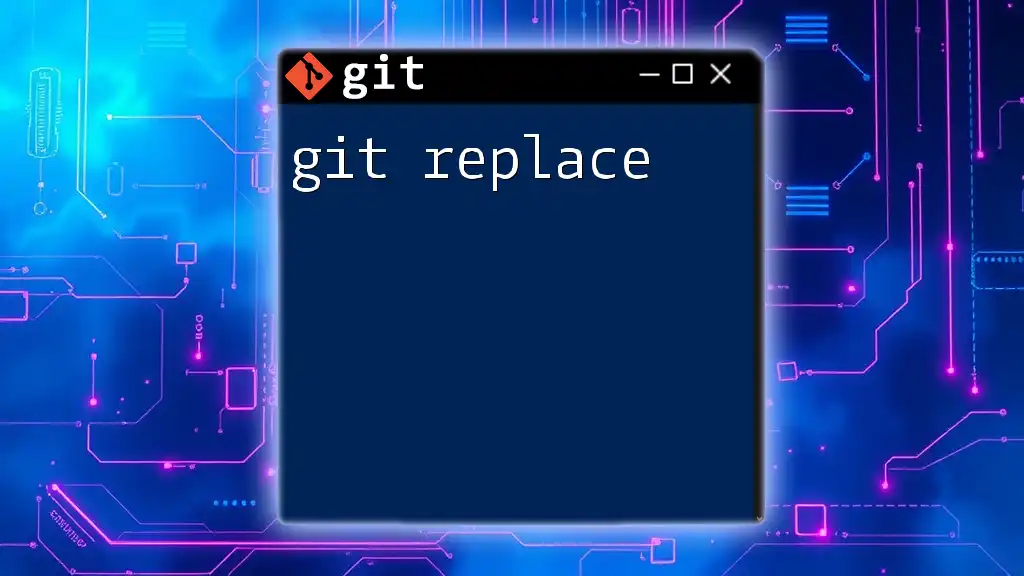
Conclusion
A well-structured README is vital for any Git repository, serving as the first interaction users will have with your project. By following the elements laid out in this comprehensive guide, you can create an informative, appealing, and accessible README that serves its purpose effectively.
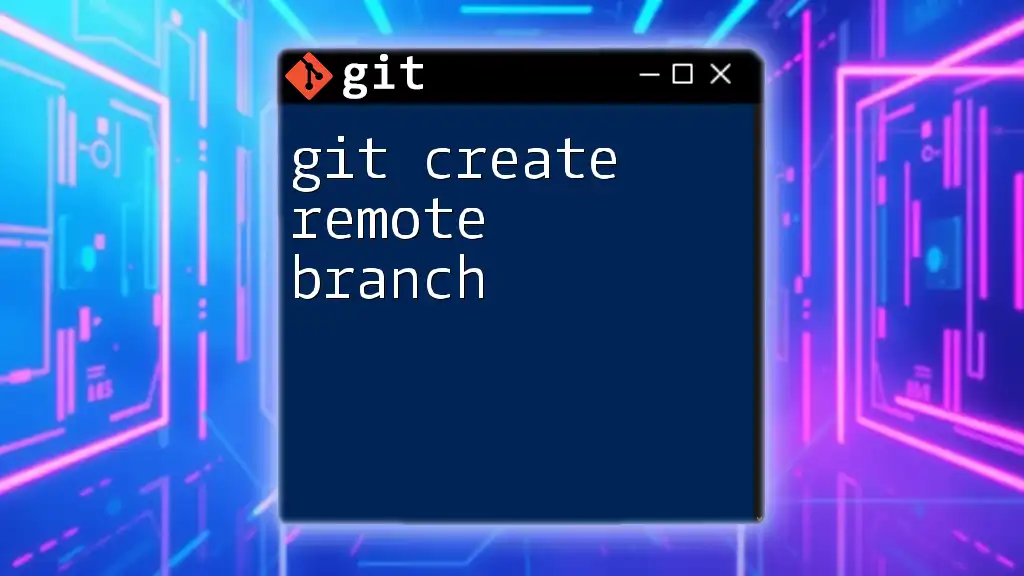
Additional Resources
For further reading, you might consider exploring exemplary README files from popular repositories or utilizing resources that delve deeper into best practices for documentation. The journey of enhancing your Git proficiency begins with mastering your README file, so start drafting yours today!

